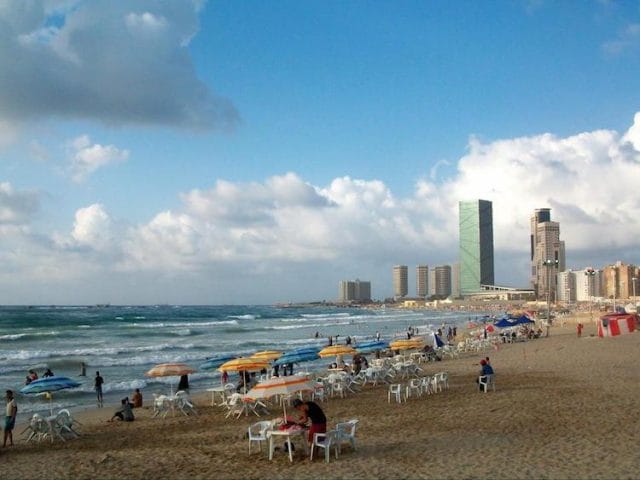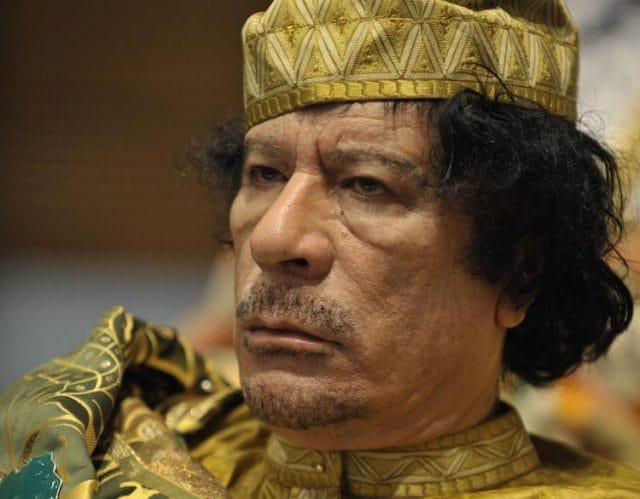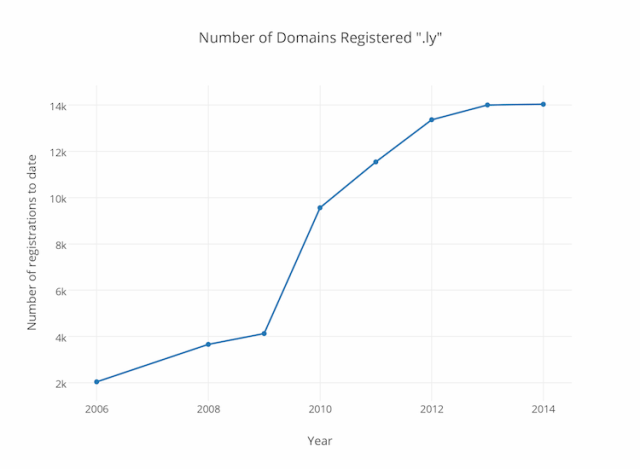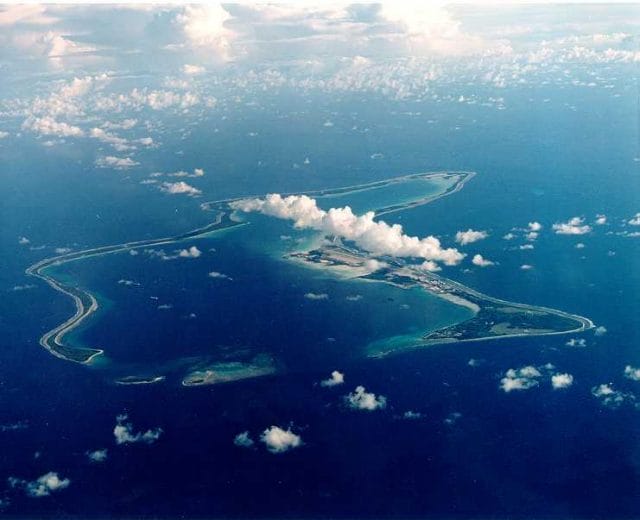
Azaz, Syria, 2012 (Christiaan Triebert)
In 2012, the US imposed sanctions on Syria, for, among other things, their occupation of Lebanon, their apparent support for terrorist groups, and an intent to pursue weapons of mass destruction. One Slate reporter pointed out that this meant bad news, not for the Syrian people, but for a little startup called Artsy.
Artsy — a social platform for sharing and purchasing art — occupied the domain Art.sy. The “.sy” in the URL is the country code for Syria. .Sy domains are ultimately registered with and purchased from a Syrian Internet authority. Although Artsy had registered Art.sy in 2011, before sanctions were imposed, Artsy’s annual payments to maintain the domain meant they were breaking sanctions.
This was an accident, of course. As the CEO wrote to the Slate reporter, Artsy chose the domain because it, “perfectly captures Art.sy’s mission and accessible character, and is the shortest english spell-able domain that begins with the word ‘art’ making it perfect for sharing on social networks.”
“To call your company by that name, it’s cute,” sanctions specialist Mark Dubowitz told Slate, “but it’s not that cute when you consider the country whose name you are using is responsible for killing Americans.”
Soon after, Art.sy changed its url to Artsy.net (a change that cost them “under $50,000.”)
Syria is by no means alone as a complicated country in control of a catchy .com alternative. Montenegro is responsible for .me addresses — popular for personal portfolios, and also with Facebook, which now owns fb.me. Libya licenses every url that ends in .ly: embed.ly, crowd.ly, Adf.ly, Ow.ly, and all the the “bit.ly” links shortened by Bit.ly.
The nation of Tuvalu licensed their suffix, “.tv”, to Verisign in exchange for $10 million up front, and $2.2 million annually. That annual fee makes up about 10% of the small island government’s total revenue. Tuvalu’s government has literally paved their streets with domain name money. The coincidence that their country name’s international abbreviation is an English-language pun has become, arguably, their most valuable resource.
How did such a system come about? And is it here to stay?
The God of the Internet

Jon Postel (Carl Malamud)
Until 1998, the Internet had a “God.” His name was Jon Postel.
Postel was a computer science student at UCLA in the late 1960s. In 1969, he got into the Internet more or less on the ground floor, when he was part of the team that set up the first node of the ARPANET — which would lay the technological groundwork for the modern Internet.
In these early days, computers would refer to each other and the files on them by IP address. The earliest web addresses were strings of numbers, like: 123.45.67.89. If you wanted to reference, access, or communicate with a computer, you’d type in its numerical address. As the ARPANET grew, its moderators compiled a single file mapping memorable names, often pronounceable strings of characters, to IP addresses. This file was named “HOSTS.TXT”, and it was like a giant phone book with every computer’s name and number in it. Hosts made copies of the master HOSTS.TXT. This system got more and more cumbersome as the network got bigger and bigger.
In 1983, ARPANET became a subnet of the early Internet. At around the same time, Postel, along with computer scientist Paul Mockapetris, devised a new system to name the various places of the web. Their invention, called the Domain Name System (DNS), took the role of the HOSTS.TXT file and distributed it across an eventually vast, multifaceted network of servers.
Part of this involved sectioning off all the addresses in the network into top-level domains. A top level domain (TLD) is designated by the last characters of a URL.
Some TLDs, like .com and .net, were made open for anyone to register, historically on a first-come, first-served basis. Others were more restricted. .org, for example, was originally intended just for non-profit institutions (though this restriction has since been lifted), and .edu for educational institutions (this restriction has since been narrowed to US-based 4-year accredited institutions).

It was also decided that some top level domains would correspond to the geographic location of a computer. These are known as country code top level domains. The first of these country code TLDs were: .us (US), .uk (UK), and .il (Israel) in 1985, followed by .au (Australia), .de (Germany), .fi (Finland), .fr (France), .jp (Japan), .kr (Korea), .nl (Nederlands) and .se (Sweden). All the countries the International Standards Organization listed in the ISO-3166 got their own domain, provided there was an appropriate entity to claim authority over it.
Registration of restricted TLDs and of country code TLDs was governed by organizations called domain name registries — these registries could either act as registrars or delegate the task to other entities. Before 1998, the task of appointing registries fell to Jon Postel, who headed the Internet Assigned Numbers Authority (IANA). As Postel wrote in 1994:
“The IANA is not in the business of deciding what is and what is not a country. The selection of the ISO 3166 list as a basis for country code top-level domain names was made with the knowledge that ISO has a procedure for determining which entities should be and should not be on that list.”
Jon Postel passed away in 1998, but the system he stewarded lived on. Authority over many of his former duties was passed onto the newly-formed nonprofit: Internet Corporation for Assigned Names and Numbers (ICANN).
The Rise and Fall of .Ly

Libya doesn’t have any more to do with adverbs than the next country (Abdul Jawad-Elhusuni)
Many of these mundane little country code TLDs mask histories of geopolitical intrigue. Some of these have been collected by James Bridle as a project at Citizen-Ex. In the project’s description, Bridle highlights an often-overlooked fact about the Internet:
“[T]he internet is very real, and very solid: a world-wide infrastructure of computers, cables, routers – and people. And that infrastructure means it’s connected to real places, with real territory, real citizens, and real politics.”
No TLD illustrates this better than .ly — the TLD for the North African nation of Libya. As the suffix for most English-language adverbs, it’s quite popular. The allure of a punchy domain, in an age when most reasonable .coms were already taken, even inspired a trend of adverbial startup names: Embed.ly, Crowd.ly, Ow.ly, Bit.ly.
In 1997, the IANA under Postel granted authority for .ly to somebody named Kalil Elwiheshi. Despite actually residing in England, Elwiheshi provided, with his application, an address in Tripoli, Libya’s capital. At the time, the IANA did not have the resources to find Elwiheshi out, so he became the technical manager of .ly’s registry.
“A British company […] acted as collector of registration fees for .ly,” Ruling the Root: Internet Governance and the Taming of Cyberspace documents, “which it split with [Elwiheshi]. Such arrangements were not at all uncommon with other developing country ccTLDs.”
In April 2004, some 12,400 domains ending in .ly disappeared. The British company managing it had disappeared, too, and for a time nobody knew what to do. According to Bridle, “some but not all” of the domains came back online within a few days, and one “Dr. Hosni Tayeb” sent a cryptic email to all domain holders communicating, in broken English, that everything was fine: “Thank you very much for your concern about .ly cc TLD. People do care around!”
Everything was obviously not fine. Seeing an opportunity, later that year the General Posts and Telecommunications Company (GPTC) applied with ICANN to take over the registry, with the blessings of the Libyan government and the “Internet community” of Libya. ICANN approved the change in authority.
But as neither Libya’s government nor its position in the global balance of power has been stable since 2004, the .ly TLD hasn’t been exactly stable either.

Violet Blue, in a tank top (Violet Blue)
GPTC’s actions as the registry of .ly offer a good illustration of the possible power it affords. Even though a government cannot go in an and remove the content of a site, if they revoke its URL, nobody can find it anymore. In 2010, vb.ly — a domain owned by “sex-positive url-shortener” Violet Blue — was removed from the .ly registry, on the grounds that it had violated Libyan law and the terms of its registration. As their letter explained:
“Pornography and adult material aren’t allowed under Libyan law, therefore we removed the domain. […] The issue of offensive imagery is quite subjective, as what I may deem as offensive you might not, but I think you’ll agree that a picture of a scantily clad lady with some bottle in her hand isn’t exactly what most would consider decent or family friendly at the least.”
The image the letter refers to was a photo of writer and San Francisco-based sex columnist Violet Blue in a tank top, drinking a beer.
GPTC was run by President Muammar Gaddafi’s eldest son, Muhammad Gaddafi. According to New Media, Old Regimes: Case Studies in Comparative Communication Law and Policy:
“The Gaddafi family was essentially the gatekeeper of the Internet Libya. This made it easy for the regime to use the telecommunications system to censor all kinds of content that had the potential of threatening the regime.”
Then, in 2011, civil war broke out in Libya. One of the main registrars of .ly addresses, Libyan Spider, was shut down, apparently as part of UN/US sanctions on Libya. For a time, the owners of Libyan Spider were only able to revive these urls by leaving the country.
The start-up Letter.ly also announced that it had gone down because it had let its domain registration expire, and it could not establish contact with the registrar to renew it’s contract. “Sorry for the hassle,” they wrote in an email to their users. “it’s amazing that a physical war has affected our service in this way.”

Muammar Gaddafi, President of Libya (deceased)
Another thing that happened, in the fray of the war, was the Libyan government shutdown the internet. In response to worry that every Bitly-shortened link would soon no longer work, Bitly’s CEO explained that there were five authoritative root servers for .ly — only two of which were in Libya. Others pointed out that even this did not entirely insulate bit.ly from the situation in Libya. From readwrite:
“[T]he servers outside of Libya are still reliant – eventually – on obtaining updates from the .ly registry within the country. ‘If they are unable to succeed in getting updates, at some point they will consider the data they have stale and stop providing information on the .LY domain.’”
Readwrite’s expert said it would take about 28 days without an update to shut .ly down. The point was that even if Bitly didn’t fail then — which it didn’t — had the situation in Libya been a little bit different, it certainly could have.
Today, Libya’s government is still disputed. Access to the different domains is split between two competing governments. As Khaled Esheh, the technical manager of the .ly registry, told Bridle: “The government domains are distributed between the two parties and it depends on who has the password which allows them to change the details of the domain.”
Maybe because of this instability, or maybe because adverbs have simply passed out of fashion in the fast-changing world of start-up names, .ly seems to be on its way out. While .ly domains are still being registered, they’ve flattened out considerably since 2011:

.Ly registrations, Rosie Cima, Priceonomics; data via BostInno
The Rise of .Io and .Me
Late last year, ICANN made a move that they hoped would help the whole economy of TLD registration make a little more sense. They introduced hundreds of new, generic TLDs, in several different languages, to the system. Now, if you register with the group that has bought authority over the TLD, you can have a website with a URL ending in .help, .photos, .tennis, .rich, or .sex.
But don’t let the ebb of .ly fool you. Even with this shift, the age of country code TLD-based domain hacks is by no means over, as some of these two-letter codes are just too good to ignore. In December of 2014, Deputy Prime Minister Vujica Lazovic noted that his newly-formed nation of Montenegro had brought in $15 million by licensing out domains ending in .me since they put them on the market in 2006. .Me addresses are popular for personal websites, especially those built with Flavors.me, but Facebook has also bought fb.me.
Another rising star is .io. Introduced in 1998, .io addresses now comprise 0.1% of all websites, including close.io, outbound.io, github.io, and card.io. There are lots of reasons for the popularity: .io is pronounceable, an acronym for “input/output”, a visual pun on 1 and 0. Io’s registry is based in the British Indian Ocean Territory. As Russell Beattie wrote of the TLD in 2013:
“The .io ending is just fantastic – it sounds great, and almost no one will associate .io with any specific country. Though the fact that it’s for the British Indian Ocean Territory – and thus under stable British rule – is great as well, especially compared with Libya’s .ly domain.”
James Bridle, who wrote and compiled the Citizen-Ex stories, is of a different opinion. Britain’s history of colonialism over the 1,000+ tiny islands that make up the British Indian Ocean Territory is complex, and it isn’t clear where the registry money is going nor whom it benefits. The native population was ‘evicted’ in the 1960s and 1970s, and remained exiled despite continuous efforts to return. Right now, the only people who live there are a couple thousand British and US military personnel.

Aerial view of one of the islands, Diego Garcia, showing military base.
“.Io is a place, but you can’t go there,” Bridle writes, “unless you’re serving in the military, sailing your own yacht, or in chains. The only way the rest of us can reach it is through the Internet.”
Like Libya, the British Indian Ocean Territory is another example of how a cool-sounding abbreviation in a URL can mask a complex situation in the real world. And there are dangers to that. The more obscure countries of the world are selling their names away as branding tools. In such a system, it’s easy to lose sight of the very real geographic and political dimensions to a domain name.
Our next post examines how much urine splashes back on you when you use a urinal. To get notified when we post it → join our email list.
This post was written by Rosie Cima. You can follow her on Twitter here.



